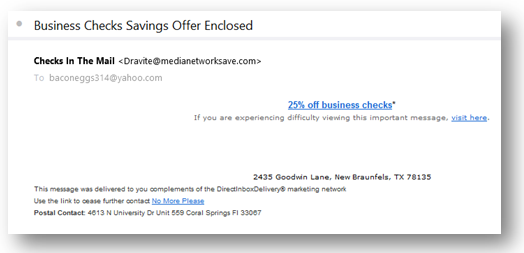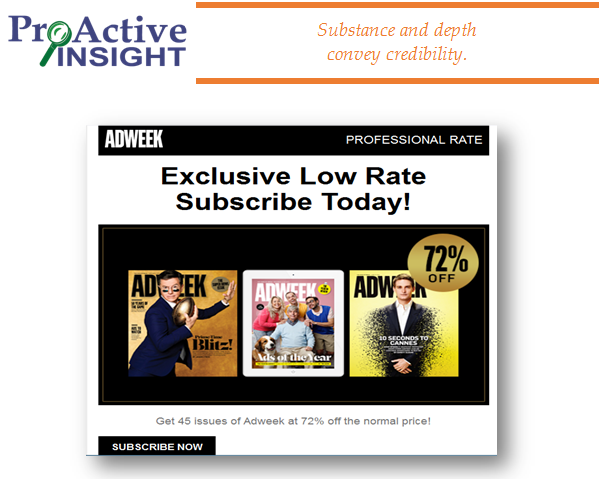Is My Email Too Long? Is My Email Too Short?
What’s a Good Length for Email Marketing??
Answer: Your Emails Should be As Long As They Have to Be to Get the Click
Email Case Study –
Scroll Down to See Some REAL Data!
Now, don’t get me wrong – email length matters. Like so many email copywriting ‘rules,’ all of them depend in part on the purpose of the email. Sharing a link to an article may not require as much copy as persuading someone to sign up for an event – usually. But there’s something else that matters much more than the length of your email.
Your audience.
In general, the false assumption too many marketing “professionals” and business owners make is that “people won’t read it” if the email is too long. I hear this all the time.
This is false because it assumes your audience does not already have a need and an interest in your products. That they aren’t already out there looking for solutions. This is crucial. If someone has interest in something, they will engage with it.

Why Opt-In Email Lists Will Read Longer Emails
In email marketing, we must presume interest from our target audience. If our target audience doesn’t read our marketing materials, then our materials must not be very good.
Worries about email length arise largely from the “millennial-obsessed” mindsets of today’s internet users. They point to studies and anecdotes that show how little time most people spend on specific web pages or reading individual emails.
The problem with those studies is that none of them apply to targeted direct response marketing. Random internet users are just browsing. They’re just wandering around, killing time. Why are they killing time? Because they have time to kill. And if they find something worth their time, they’ll engage with it.
On the other hand, when you send an email to someone who opted in to your email list – this person is not a random reader. This is someone who, at least at one point in time, saw enough value in your company or products to give you their email. You have to sustain that interest. And you won’t succeed in that by writing 50-word emails.
But even if you’re using a purchased list, these are not random readers either because your list is still based on the interests, problems, demographic data, and business struggles you know your prospects will have.
So when they see a subject line and opening paragraph that speaks to their needs, they will engage with it. And if it continues to speak to them, they’ll read the whole email – no matter how long.
We know this because there are many companies using longer emails, and making sales with them. I have never made a purchase from a short email. Ever. But I have made several purchases from long emails. And most of the time, those long emails linked to landing pages that were even longer. And most of the products I was buying were info-marketing products, selling me something I thought would help my business.
Spam: Another Reason Shorter is Not Better
If you look at any of the spam that fills up your junk folder every week, you’ll notice one feature they all have in common – extreme brevity.
Take this email, which actually did not get filtered into my spam folder:

This is the entire email. I’ve been getting one of these every few days, always from a different ‘person’, always a totally different offer and product, and always with just one link.
Here’s the thing – I don’t know if this is a real company. If they really are going to give me 25% off checks, that would be great, right? But I just don’t trust anything about this email.
And this is what all spam looks like. Very short, often just one link with no explanation.
This matters because when people get real emails from you that are too short, their mental spam filter warning light starts flashing. No matter how irresistible your call to action might be, it doesn’t look credible, so they don’t click. Substance and depth convey credibility.

Here’s another example of an email that’s too short:
This is the entire email. They are relying completely on a few cover images and a price.
But, what is Adweek even about?
What’s in the magazine that will matter to me?
What value does it bring for me?
What problem of mine will it help solve?
What reason do I have to subscribe to this?
I have no idea. I’ve never once held one in my hands or heard anyone talk about it. I can’t imagine someone like me subscribing to this magazine based on this email.
For new customers, you have to give them reasons to want your products. You have to show them why they need your help. Arouse their emotions – fear, anger, ambition, aspiration. Identify with their pain and needs.
This magazine surely meets a set of needs for a certain type of person. Am I that type of person? I have no idea. It’s their job to tell me. A longer email would at least tell me if Adweek is right for me. It would give me the chance to become a customer. The too-short email you see up above? Totally worthless and ineffective. Their entire pitch is based on price.
At the very least, if your email is this short, then your landing page better not be. Because if someone clicks through to learn more, they will need more than just a picture if you want them to buy.
You as the seller must make them feel like they must buy. Just making an offer and a price simply won’t do it.
Email Length Case Study – Were These Emails Too Long?
A more profitable way to view email is to think about email sequences (something I strongly recommend). This is true for autoresponders as well as active email series.
I wrote a 5-email series for a nonprofit that helps women and kids in Nepal escape and overcome the effects of human trafficking.
Here are the word counts:
Email 1: 601 words
Email 2: 428 words
Email 3: 247 words
Email 4: 211 words
Email 5: 260 words
This was a #GivingTuesday campaign, which we redubbed #GivingParents Day, because the call to action was to help pay for the 24-hour-a-day house parents who live in the safe home with the kids who’ve been rescued.
The thrust of the campaign was to donate on Giving Tuesday, which is the first Tuesday after Thanksgiving. Emails 1 – 3 didn’t ask for money. They told people to prepare to give on Giving Tuesday. And the links took them to the website where they could meet the house parents and learn how they are the daily difference-makers in the lives of the kids.
Only the last two emails, sent out the day before Giving Tuesday, and the day of, gave a link where people could donate.
Click rates were consistently around 3% throughout, and the campaign returned a 367% ROI – the only number that really matters.
Would we have done better to just send one email on Giving Tuesday? Not a chance. One email, no matter how long, will likely always do worse than a series. Here’s what we did with this series:
- Built momentum
- Got people interested
- Showed them the faces of the people their money would be supporting
- Asked them to give
And the emails were as long as they needed to be to tell the story and give the call to action.
Stop Worrying If Your Emails Are Too Long
Especially for higher priced products, if I see an email that’s barely longer than a tweet, but is asking for several hundred (or thousand!) dollars to buy something, that feels like a scam. But the same product, presented as part of an effectively structured sales email, feels like just what I’ve been looking for.
And please don’t misunderstand. There’s a place for ultra-short emails too. Special offers and limited-time coupons to a prepared audience can do well with really short emails. If you’re doing a webinar, often a one-sentence reminder email the day of the webinar to the people who signed up is a very wise move.
But again, most of the situations where ultra-short emails work are like those examples – where your readers have prior knowledge about your service or have taken previous actions.
Buying is about emotion, not logic. And it’s very hard to arouse emotions in 50 words.
Focus on the message, the audience, the strategy, the structure of the email, and the true value of what you’re offering. Deliver on those first, and then take a look at the length to make sure it’s not pushing 1000 words, which probably is too long for most non-newsletter emails.
Want Some FREE Email Editing?
Visit my contact page and type the words “Free Email Edit”, and send me ONE email you’ve written for your business or nonprofit. I’ll do a free editing pass, including your subject line, with no requirement to buy anything later.

